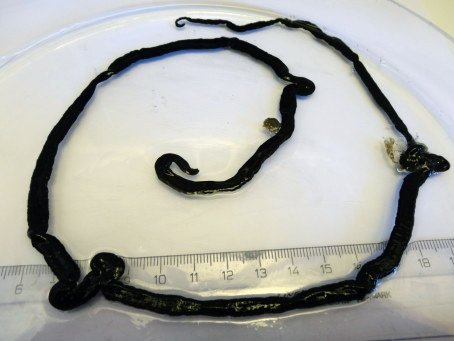
So, why bother measuring bootlace worms? Well, these worms can provide scientists with valuable data about environmental changes and health in marine ecosystems. Just like how a tree’s rings can reveal its age and the conditions it grew under, a bootlace worm’s length can tell us a lot about its growth patterns and the challenges it faces in its environment. In this article, we’ll dive deep into how to effectively document bootlace worm length during field studies and why it’s essential for marine biology.
Why Length Measurement Matters
You might be wondering, “What’s the big deal about measuring the length of a worm?” Here’s the thing—**bootlace worms** can offer insights far beyond their slimy appearance. By tracking their lengths over time, researchers can gather important data about their growth rates and health conditions. This can signal changes in their habitat, such as pollution levels or shifts in temperature that might affect marine life.
Additionally, measuring bootlace worms helps in identifying different species. Even though they may look similar at first glance, small variations in length can indicate distinct species or subspecies. This information is crucial for biodiversity studies and helps in conservation efforts to protect these fascinating creatures and their habitats.
Moreover, understanding the physical characteristics of bootlace worms can aid in their role within the food web. As prey for various species, their condition and length could directly impact the animals that rely on them for food. So, measuring these lengths is not just a task—it’s a key to unlocking the mysteries of marine ecosystems.
Tools Needed for Measurement
To get started with documenting bootlace worm lengths, you’ll want to arm yourself with the right tools. Here’s what you should consider:
- Measuring Tape: A flexible measuring tape is ideal for getting the exact length without damaging the worms. Think of it as your trusty sidekick in the field.
- Notebook or Data Log: Keeping a dedicated field notebook helps you record measurements in real time. Trust me; you’ll thank yourself later when you’re trying to remember specific details!
- Camera: Taking photos can provide visual evidence of your findings. Plus, it gives you something to show off at dinner parties.
- Gloves: Since you’ll be handling marine life, wearing gloves protects both you and the worms from potential harm.
With these tools at your disposal, you’re well-equipped to embark on your field study. Remember, preparation is key—taking the time to gather your resources will make the actual measuring process smoother and more accurate.
Measuring Techniques
Once you’re geared up and in the field, it’s time to measure! Here’s a step-by-step guide on how to do this effectively:
1. **Locate the Worm**: Search tidal pools or sandy areas where bootlace worms are often found. They can sometimes be camouflaged, so keep your eyes peeled!
2. **Gently Extract the Worm**: Use a small shovel or your hands to carefully lift the worm from its habitat. Avoid tugging or pulling too hard, as this could harm the worm or your data.
3. **Align the Measuring Tape**: Place the measuring tape alongside the worm. Ensure it is straight and taut, without any bends or twists. This helps in getting an accurate measurement.
4. **Record the Length**: Note down the length directly in your notebook. Don’t forget to include the location, date, and any environmental observations that might be relevant!
Measuring these worms requires patience and care. After all, you want to get it right to contribute meaningful data to the scientific community.
Common Challenges and How to Overcome Them
Documenting bootlace worm length isn’t without its hurdles. Here are some common challenges you might encounter:
– **Worms Can Be Slippery**: Bootlace worms are notorious for their slippery bodies! If they wriggle away while you’re trying to measure, don’t get frustrated. Taking extra care and using gloves can help you maintain a grip.
– **Measuring in Uneven Terrain**: Field studies often take place on rocky or uneven surfaces. Consider bringing a mat or towel to kneel on while you measure, making the process more comfortable and stable.
– **Data Accuracy**: It’s easy to lose track of your measurements if you’re not organized. Developing a consistent recording method—like always writing the length in centimeters—can help ensure your data remains accurate.
By anticipating these challenges, you can approach your field studies with more confidence and focus on the joy of discovering!
Analyzing Your Findings
After collecting your data, the next step is analysis. This is where the real fun begins! Once you have your measurements, consider these points:
– **Look for Patterns**: Are there particular areas where the worms are longer or shorter? This could indicate significant environmental factors at play.
– **Compare with Previous Studies**: If you have access to historical data, comparing your findings can help identify trends. This could be a great starting point for a research paper or presentation.
– **Share Your Results**: Engage with the scientific community or local conservation groups. Sharing your findings can spark important discussions and collaborative efforts to protect marine ecosystems.
Remember, even if your study finds unexpected results, they can all contribute to the bigger picture of marine biology.
Documenting bootlace worm length in field studies may seem like a small task, but it plays a vital role in understanding marine ecosystems. With the right tools, techniques, and a bit of patience, you can gather important data that contributes to biodiversity research and conservation efforts.
So, next time you find yourself by the ocean, take a moment to appreciate the wonders beneath the waves. Who knows? You might just help uncover the secrets of these squirmy creatures, all while enjoying the great outdoors! Happy measuring!
